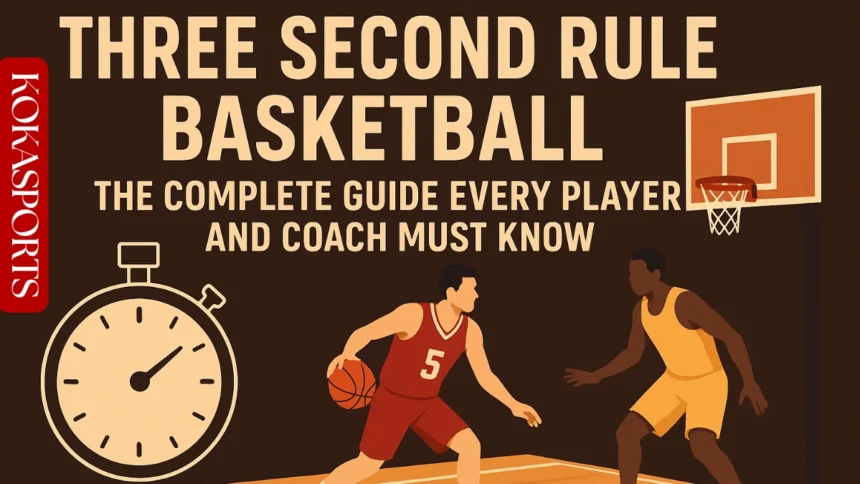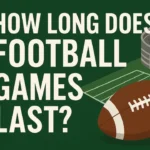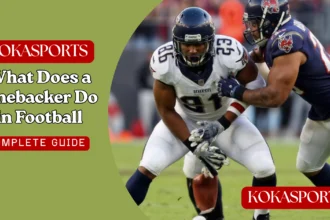Basketball has many rules. Some are easy to understand. Others are hard. The three second rule basketball is one rule that many people misunderstand. This rule is very important for players and coaches to know.
Many players get called for this violation. It happens a lot in games. When you know this rule well, you can avoid getting called for it. This guide will teach you everything about the three second rule basketball in simple words.
What Is the Three Second Rule Basketball?
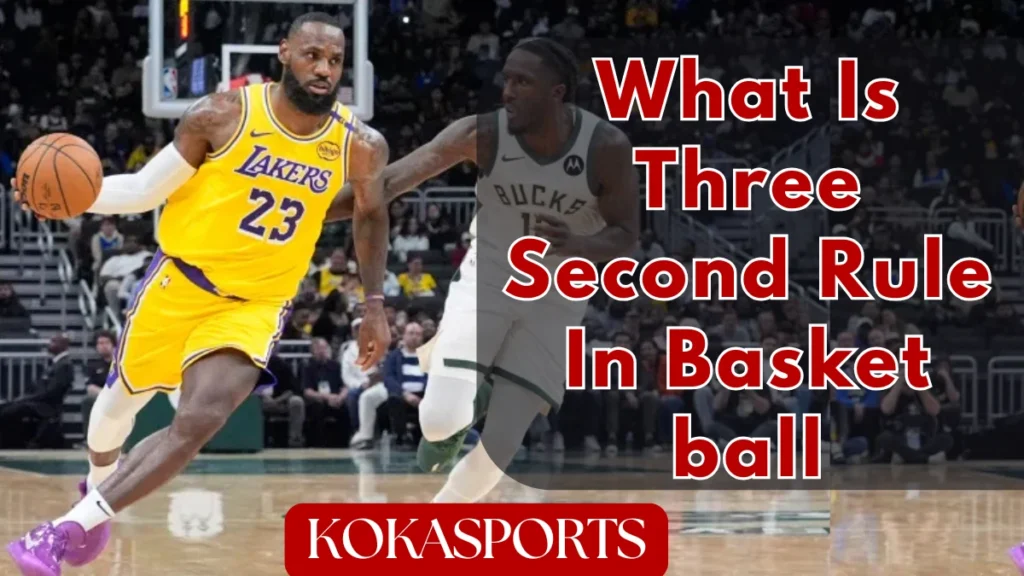
The three second rule basketball is a simple rule. It states that an offensive player cannot stay in the painted area for more than three seconds. This happens when their team is in possession of the ball.
The painted area is the rectangle under the basket. Some people call it the key or the lane. When an offensive player stands in this area too long, they get a violation.
Here’s how it works:
- Your team has the ball
- You are an offensive player
- You step into the painted area
- You must leave before three seconds pass
If you stay longer than three seconds, the referee will call a 3 second violation. This is one of the misunderstood rules in basketball.
Read More: What is the F1 Top Speed mph?
How Does the Three Second Rule Basketball Work?
The 3 second count starts when one foot enters the painted area. The count keeps going while your team has control of the ball. The referee watches and counts in their head.
The count stops when:
- You get out of the lane with both feet
- Someone takes a shot
- You receives the ball and start moving to score right away
- Your team loses the ball
The three-second count is suspended when you are actively trying to score. But if you just stand there, the count keeps going.
When Does the Three-Second Rule Apply?
The three-second rule only works when your team has the ball in the frontcourt. This means your half of the court where you try to score.
The rule does not apply when:
- The other team has the ball
- You are on defense
- The ball is in the backcourt
- Someone is shooting a free throw
The rule is designed to prevent offensive players from camping near the basket. Without this rule, big players could just stand under the basket all game.
Different Types of Three-Second Violations
Offensive 3-Second Violation
This is the most common type. It happens when an offensive player stays in the lane for 3 seconds while their team has the ball. The player must get out of the lane before three seconds pass.
Defensive Three-Second Violation
This is different. It happens in the NBA when a defensive player stays in the lane without guarding an opponent. This rule prevents defensive players from just camping in the paint.
The defensive three-second violation only exists in the national basketball association. College and high school games do not have this rule.
Why Does the Three Second Rule Basketball Exist?
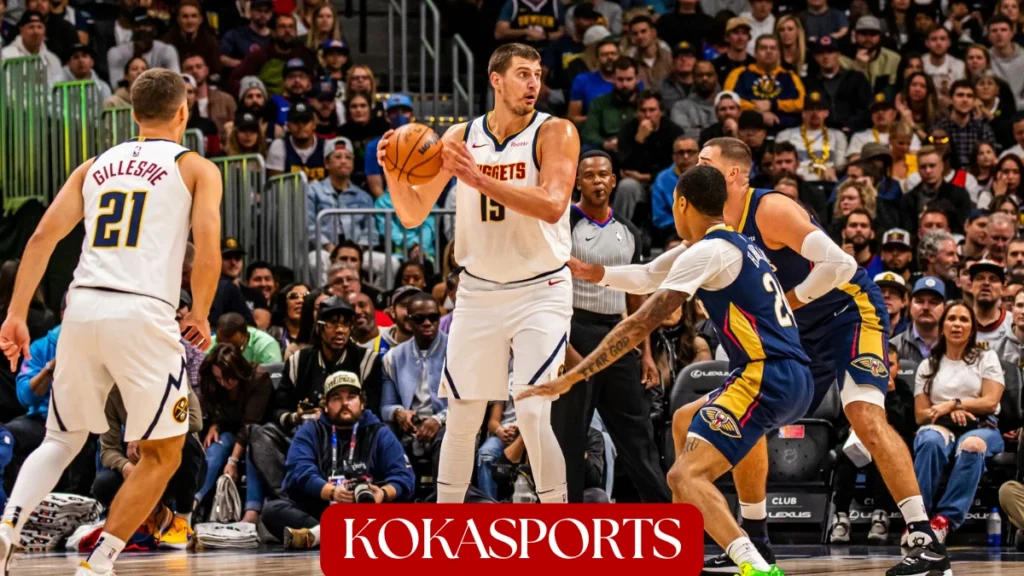
The 3-second rule exists for good reasons. Without it, the game of basketball would be different and less fair.
Here’s why we need this rule:
Prevents Unfair Advantage: Big players could just stand near the basket all game. This would make it too easy to score.
Keeps the Game Moving: The rule makes players move around. This makes basketball more exciting to watch.
Fair Play: It prevents offensive players from gaining an advantage that would be too hard to defend against.
Better Defense: A defender can guard someone better when they don’t have to worry about players camping in the paint.
The rule prevents offensive players from camping in one spot. This makes the game more fair and fun.
How Referees Call the 3-Second Violation
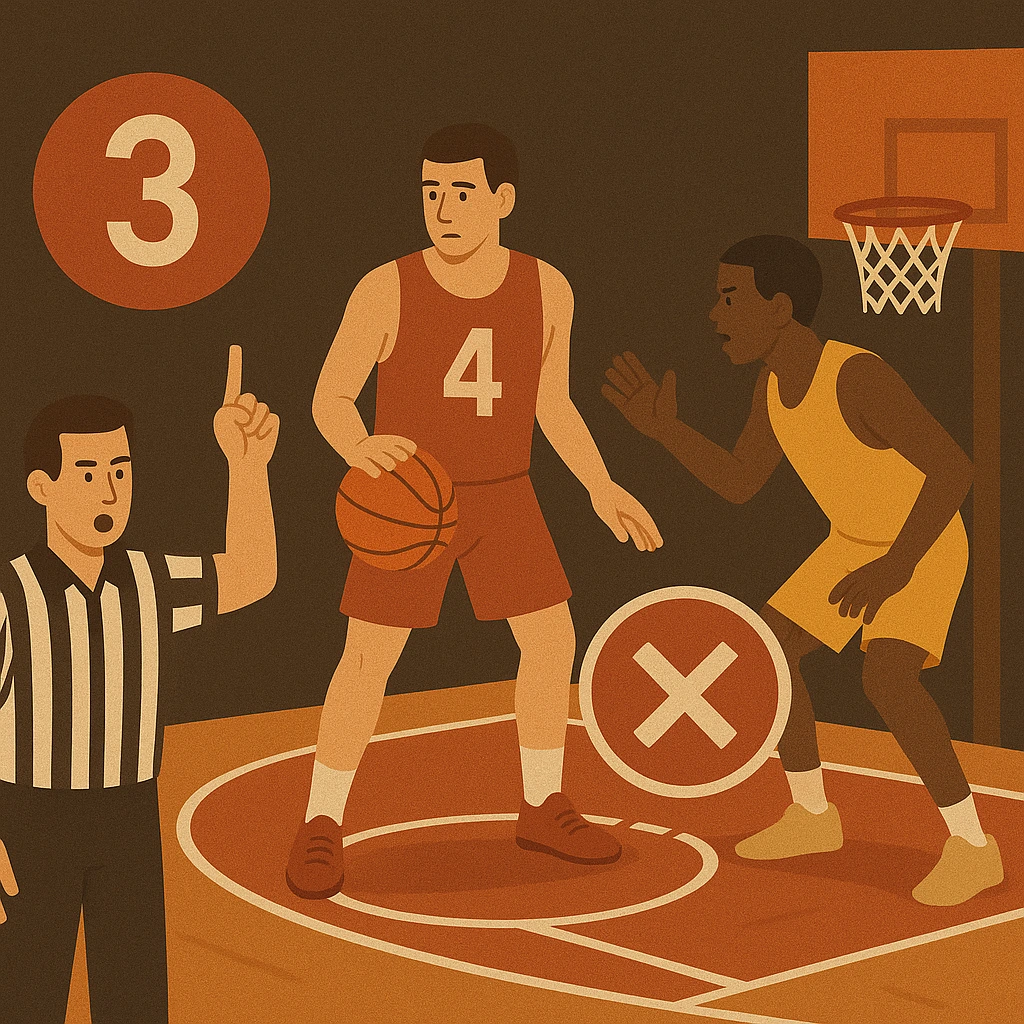
A referee starts counting when they see an offensive player enter the painted area. They count “one thousand one, one thousand two, one thousand three” in their head.
When the count reaches three seconds, the referee will:
- Blow their whistle
- Call “3 second violation”
- Point to where it happened
- Give the ball to the opposing team
Some referees give warnings. They might say “get out” before calling the violation. But players should not count on this. Not all referees give warnings.
The 3 second call is the referee’s judgment. They decide when to start and stop counting.
Common Ways Players Get Called for 3-Second Violations
Standing Too Long
The most common way is simply standing in the paint too long. An offensive player gets good position and forgets to move. They think about the three-second rule too late.
Slow Teammates
Sometimes the violation happens because teammates are slow. The player in the paint is ready to score. But their teammates do not pass the ball fast enough.
Bad Timing
Players sometimes step into the paint at the wrong time. They enter when their team just got possession of the ball. Then they stand there waiting for a pass.
Not Knowing the Count
Many players do not know how long they have been in the paint. They lose track of time and get surprised by the referee’s call.
How to Avoid Three-Second Violations
Develop an Inner Clock
Players need to feel how long three seconds is. Practice counting in your head during games. Know when you are getting close to three seconds.
Some players count “one Mississippi, two Mississippi, three Mississippi.” Find a method that works for you.
Move With Purpose
Do not just stand in the painted area. Always have a plan. Either call for the ball or get out and come back later.
Good players move in and out of the paint. They do not stay in one spot.
Communicate
Call for the ball when you have good position. Let your teammates know you are open. This helps them see you and make the pass faster.
But only call when you really have a good chance to score. If you call too much, teammates will stop listening.
Watch the Ball
Know where the ball is at all times. If your teammate is not looking at you, get out of the paint. Come back when they might pass.
Practice Quick Moves
When you receives the ball in the paint, be ready to score right away. Practice quick moves to the basket. The faster you move, the less likely you get called.
Three Second Rule Basketball in Different Leagues
NBA Rules
In the NBA, both offensive and defensive three-second violations exist. The NBA also has a defensive three-second violation that other leagues do not have.
NBA referees are very strict about the three-second rule. They watch closely and call violations quickly.
College Basketball
College basketball has the offensive 3-second violation. But there is no defensive three-second violation in college.
The athletic association that runs college basketball keeps the rules simple.
High School Basketball
High school basketball rules are similar to college. They have the offensive three-second rule but no defensive version.
Youth Basketball
Youth basketball often has the same rules. But referees might be more lenient with younger players. They might give more warnings.
Teaching Players to Avoid Violations
For Coaches
Coaches need to educate people on the rules clearly. Many players do not understand when the count starts and stops.
Practice situations where players must get out of the lane quickly. Run drills that teach proper timing.
Teach players to watch for their teammates’ signals. Good communication prevents many violations.
For Players
Players should practice the three-second timing every day. Count during scrimmages and games.
Learn to read the game situation. Know when to enter the paint and when to stay out.
Develop quick moves. When you get the ball near the basket, be ready to score immediately.
What Happens After a 3-Second Violation
When a referee calls a three-second violation, several things happen:
- The whistle blows and play stops
- The opposing team gets possession of the ball
- They get the ball at the sideline near where the violation happened
- Your team loses a scoring chance
This violation in basketball is a turnover. Your team loses the ball without getting to shoot. This is why avoiding violations is so important.
The opposing team gets a fresh possession. They can now try to score on the other end.
Advanced Strategies for the Three Second Rule Basketball
Post Players
Big players who play near the basket need special skills. They must learn to:
- Time their entry into the paint perfectly
- Make quick moves when they get the ball
- Communicate with guards about when they are open
- Develop moves that take less than three seconds
Guards and Small Players
Guards need to help prevent violations by:
- Looking for open teammates in the paint quickly
- Making fast, accurate passes
- Understanding when not to pass inside
Common Mistakes About the Three-Second Rule
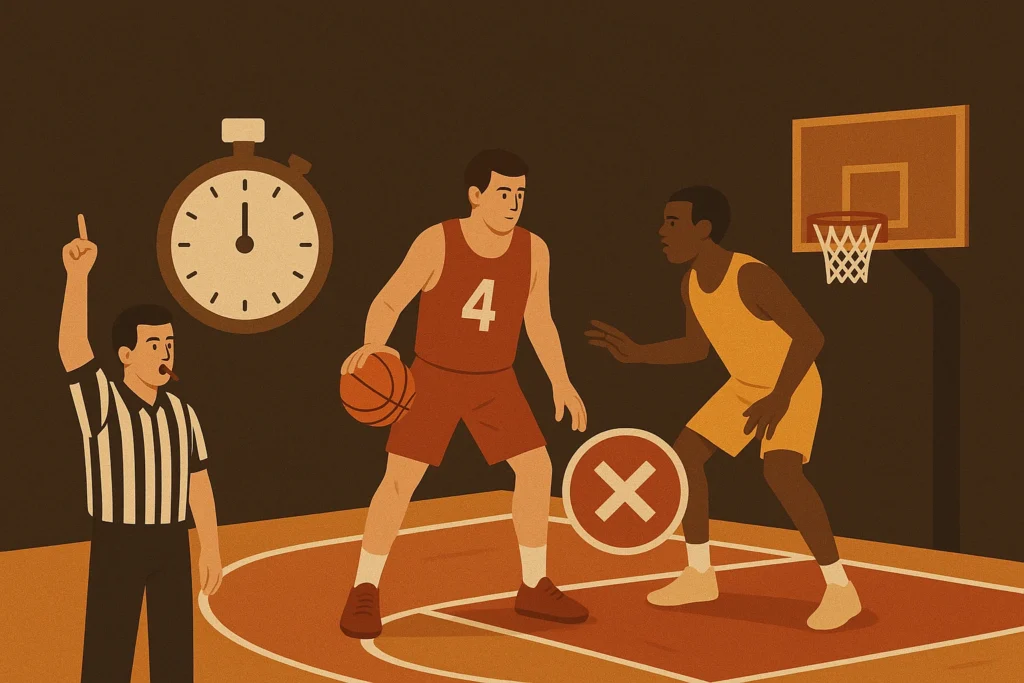
Many people misunderstand this rule. Here are common mistakes:
Thinking the count stops for any movement: The count only stops when you completely leave the painted area with both feet.
Believing you get three full seconds: The count can start as soon as one foot touches the paint.
Not knowing about shot attempts: When someone shoots, the count resets. You can stay in longer if there are multiple shots.
Confusion about defensive violations: Only the NBA has defensive three-second violations.
The Free Throw Lane and Special Situations
During a free throw, special rules apply. Players line up along the free throw lane in specific spots. The three-second rule does not apply during free throw situations.
But as soon as the free throw is over and someone gets the ball, the three-second rule starts again.
Impact on Game Strategy
The 3-second rule changes how teams play. Coaches must design plays that account for this timing.
Offensive teams cannot just put their best player in the paint and leave them there. They must create movement and quick passing.
This makes basketball more exciting. Teams must use skill and timing, not just size and strength.
Tips for Different Positions
Centers and Power Forwards
Big players spend the most time near the basket. They must:
- Master quick post moves
- Learn to step out and come back in
- Practice catching and shooting in less than three seconds
- Communicate clearly with guards
Guards and Wings
Smaller players help by:
- Making quick decisions about passing inside
- Understanding when the lane for 3 seconds is about to expire
- Looking for cutters and post players immediately
Conclusion
The three second rule basketball is a key rule that every player must understand. It prevents offensive players from gaining unfair advantages near the basket. When players know this rule well, they can avoid costly turnovers.
Remember these key points:
- An offensive player cannot remain in the paint for consecutive seconds while their team retains possession of the ball
- The count starts when one foot enters the painted area
- Players must get out of the lane before getting called
- Good timing and communication prevent most violations
Whether you play in the NBA or just for fun, knowing basketball rules makes you a better player. The three-second violation is just one of many rules in basketball, but it is one of the most important ones to understand.
The game of basketball is more fun when everyone knows the rules. Take time to learn them well, and you will enjoy playing much more.
FAQs
What is meant by 3 for 2 rules in basketball?
You get 3 free throws when fouled on a missed 3-point shot.
What is the three-second rule basketball?
Players cannot stay in the paint for more than 3 seconds.
What is rule 3 in basketball?
Rule 3 is about players and team equipment.
Is there a 3-second rule in international basketball?
Yes, international basketball has the 3-second rule.

